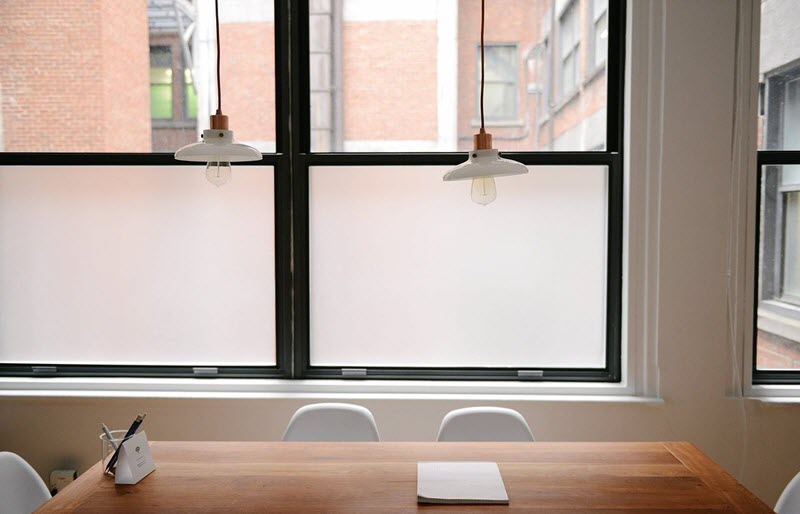Windows are a key element of our home, on one hand they allow us to be in relation to the outside, enjoy the surroundings, fill our spaces with light, but at the same time they must protect us from the inclement weather and not be a drain by the that we lose the heat of our house in winter or the coolness in summer. That is why we must pay special attention when changing the windows of our home, or choosing them in the case of new construction. For this, it is best to trust our architect and follow his instructions, here are some keys things to consider when choosing and setting up good windows for your home.

1. THE MATERIAL UPVC, ALUMINUM OR WOOD?
Basically, these are the 3 materials we can choose for our windows. Nowadays the use of uPVC is very widespread since it is cheaper and among its properties is that it is not a good conductor of temperature, uPVC itself insulates well. However, there are equivalent solutions in aluminum (always with thermal break) and even in wood.
The main difference between aluminum and uPVC windows is that, in the first ones, we can have a finer profile, however in uPVC the profiles (the window frame) are usually thicker, which will leave less space with glass. On the other hand, if we talk about very large windows, we may be forced to choose aluminum because it is more resistant than PVC and can withstand larger and heavier glass.
Wood is possibly the most expensive option from an economic point of view, but it also has a very good behavior. Remember that wood is a non-conductive material by nature, a good thermal and acoustic insulator. If we have some old wooden windows in the house we may be interested in changing the glass and restoring them and conserving the frame, all this provided that the fittings and the entire closing system work properly (it is important that they maintain water and air tightness ).
We can also find windows that combine aluminium (on the outer side) and wood (on the inner side). We must not forget that wooden windows require more intensive maintenance (protective varnishes and other treatments) than uPVC or aluminum.
The type of window opening is also important if we want to optimize well-being and energy consumed in our home. As a general rule, we should know that the windows with hinged closure are more hermetic than the sliding ones. On some occasions, in enclosures that give access to a terrace or an outdoor garden, we may be interested in a sliding door solution for aesthetics, a good option for these cases are the lift slide or the tilt-and-turn, which have a more hermetic closure than the standard ones, although they also have a higher cost.
As we have already said, if what we are looking for is a good thermal-acoustic insulation, it is best to avoid sliding windows and placing hinges, tilt-and-turn or even pivots.
2. Consider the weather and location
It is tremendously important to pay attention to the location of the home. A window located on the beachfront with a humid climate is not the same as a window in the centre of a large city on a busy street. If we want to achieve the greatest comfort inside the home, we must take into account both thermal and acoustic insulation .
In this sense it is necessary to contemplate the carpentry assembly, not only the profile but also the type of glazing . For example, a south-facing window that receives a strong solar incidence will require glazing that reflects solar radiation and at the same time reduces energy losses to the outside of the home, such as air conditioning. Moreover, each room in the home may require a type of glazing depending on its location and solar incidence.
3. The type of window opening influences its thermal performance
Within the same house, the rooms we said vary significantly, and not only must be paid attention to the outward location, but also to the space and size of the room.
The opening of a window influences its performance or behavior against water, air and wind. Kitchen and bathroom windows usually require sliding openings because they are areas with smaller spaces. However, the rest of the rooms may perfectly require practicable opening windows or their tilt-and-turn variant, with one or several leaves.
In general, windows with practicable openings show better performance than sliding ones, although high-performance sliding windows already exist on the market, designed for example to cover large gaps from exits to porches or terraces.
4. Consider Functionality and Your Needs
Along with quality materials you will also want to consider window features that will fit into your lifestyle. Families with small children should make safety a priority with handles and locks that are no accessible to little hands. On the other hand, ease of use features like easy to open and easy grip handles may benefit your lifestyle better. Additional features like sound insulation are helpful for individuals with different sleeping patterns, for instance, those who work at night or suffer from sleeping problems. Your new window investment is a big commitment that you will be living with for a long time, be sure to prioritise your needs and the needs of your family members before making your purchasing decisions.
5. Invest in Energy Efficiency
New or replacement energy efficient windows do a lot more for you and your family than you think. If you think about your windows as the most vulnerable spots in your home, it should come as no surprise that specially designed windows will lessen your power consumption. Beautex windows make use of natural lighting during the daytime, eliminating the need for indoor electricity in many areas. Heat reflection combats the absorption of heat while still letting in the light, reducing the need to cool your home during the day.
